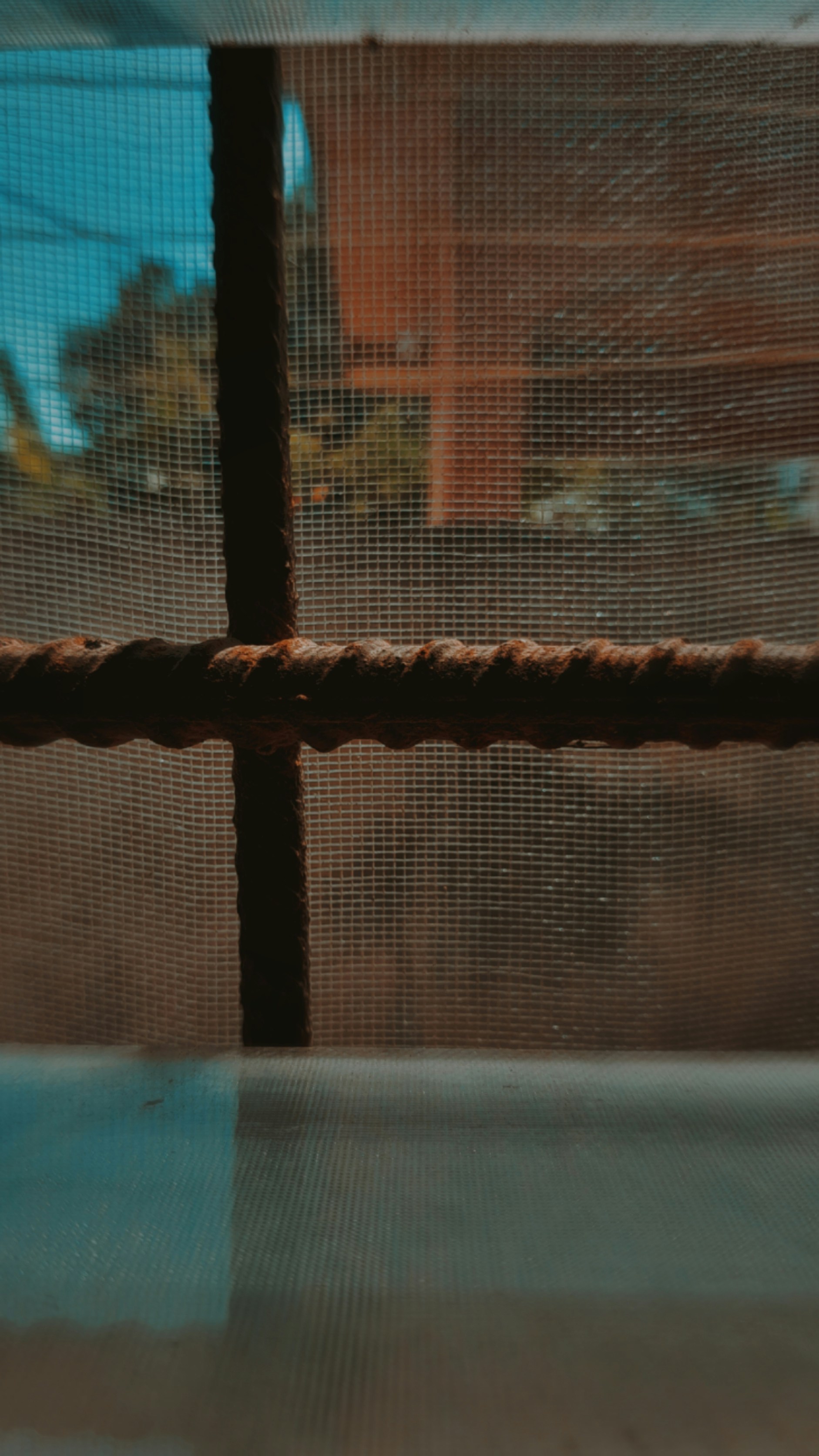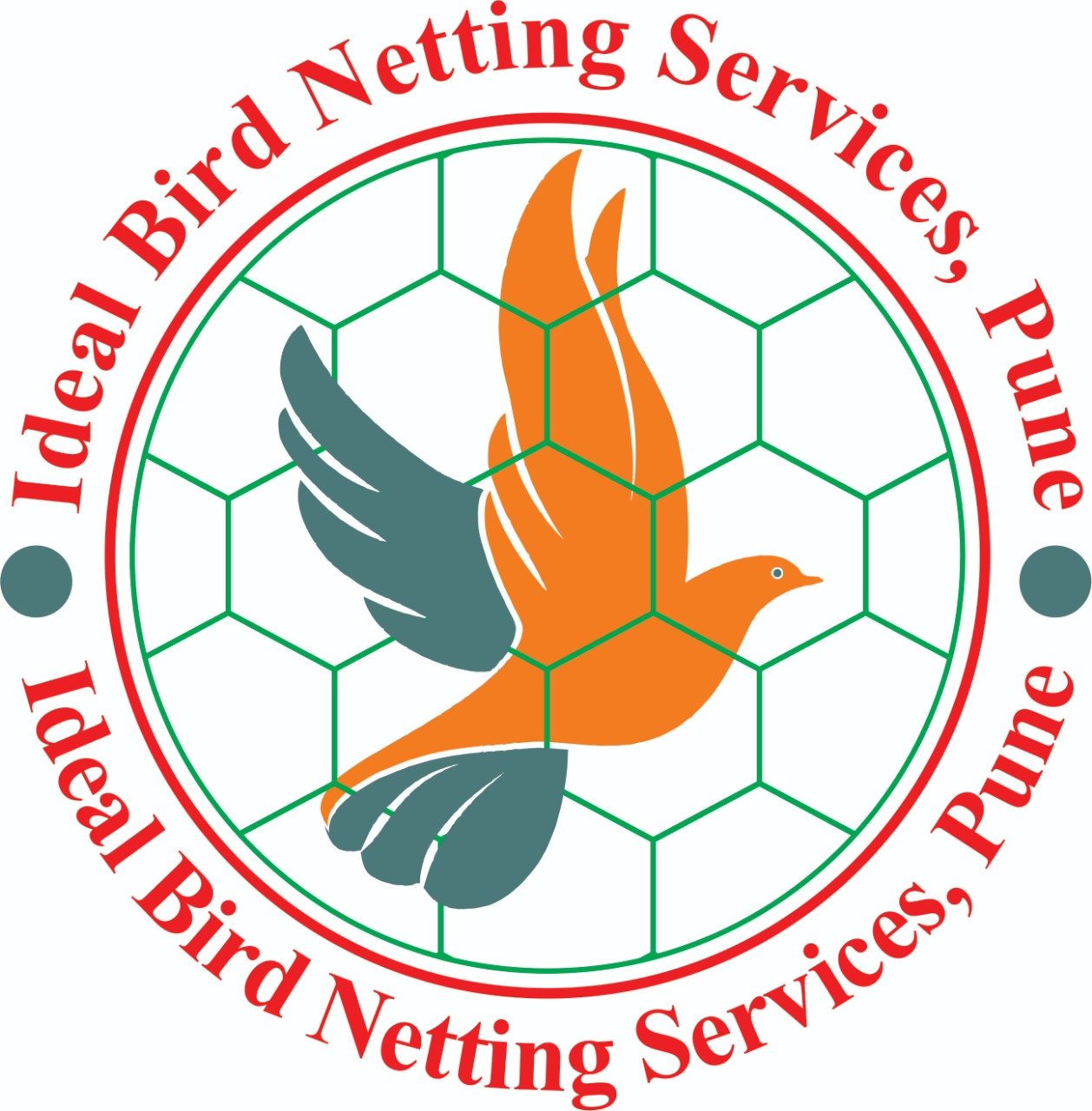
Introduction to Netting Solutions
Netting solutions have become increasingly popular for residential and commercial applications due to their effectiveness in providing protection and enhancing safety. Various types of netting are available in the market, each designed to meet specific needs and requirements. Understanding these options is essential for making informed decisions when considering netting for your property or workspace.
Bird netting is primarily used to deter birds from accessing certain areas, such as gardens, rooftops, and balconies. This type of netting is made from durable materials that withstand various weather conditions, ensuring long-term protection against unwanted avian visitors. It not only prevents property damage but also helps in safeguarding crops and gardens from pests effectively.
Invisible grills, on the other hand, are constructed to provide safety without compromising aesthetics. These grills are made from stainless steel materials and are virtually invisible, allowing for unobstructed views while ensuring safety for children and pets. Their popularity in urban settings is increasing, as they offer peace of mind regarding security without adding to visual clutter.
Another prevalent option is mosquito netting, which serves to keep insects at bay, particularly in outdoor environments. This type of netting is essential for those living in areas where mosquito populations are high, as it provides a barrier against bites and reduces the risk of mosquito-borne diseases. Mosquito netting can be installed over windows, doors, or outdoor areas, making it a versatile solution to enhance comfort during warmer months.
Each netting solution presents unique features and benefits tailored to specific situations. As this overview illustrates, selecting the appropriate type of netting is crucial for fulfilling individual needs effectively, whether for pest control, safety, or aesthetic purposes. Understanding the diverse applications of bird netting, invisible grills, and mosquito netting can guide consumers in making the best decision for their circumstances.
What is Bird Netting?
Bird netting is a widely utilized solution designed to deter birds from accessing specific areas, safeguarding properties, crops, and various infrastructures. Constructed from durable materials such as polyethylene, nylon, or polypropylene, bird netting is capable of withstanding the elements while maintaining structural integrity over an extended period. The design typically features a mesh-like appearance, allowing for visibility while effectively obstructing birds. This netting is precisely crafted to prevent birds from entering spaces without compromising natural light or airflow.
The primary purpose of bird netting is to provide a humane deterrent that minimizes bird activity in sensitive locations, such as gardens and farms. Its effectiveness is particularly evident in agricultural settings where crops are at risk from various bird species that may damage or consume the produce. By installing bird netting around these areas, farmers can significantly reduce crop loss, leading to enhanced yield and profitability.
Bird netting is also commonly employed in urban environments, where it protects buildings and structures from invasive birds that may cause damage to roofs, eaves, and ventilation systems. In addition to safeguarding property, bird netting serves as a proactive measure to avert the health risks associated with bird droppings, which can carry diseases. In essence, bird netting represents an essential investment for those aiming to mitigate the risks associated with bird intrusion, preserving both property and agricultural investments effectively.
Various contexts see the application of bird netting, ranging from residential gardens to commercial agricultural businesses, emphasizing its versatility. Consequently, selecting the right bird netting system largely depends on specific needs, environmental conditions, and the type of birds to be deterred. By understanding the intricacies of bird netting, individuals and businesses can make informed decisions tailored to their unique challenges.
Understanding Invisible Grills
Invisible grills represent an innovative solution for homeowners seeking to enhance safety and security without compromising the aesthetic appeal of their living spaces. These grills are constructed from high-strength stainless steel cables that are expertly woven to create an almost-transparent barrier. This design allows for unobstructed views, making them particularly suitable for balconies, patios, and open spaces, where maintaining an inviting ambiance is essential.
Functionally, invisible grills serve as a protective measure against potential falls or intrusions while ensuring that the atmosphere remains light and airy. Unlike traditional safety barriers, which can appear bulky and obstructive, these grills blend seamlessly with the environment. This subtle integration not only preserves the architectural beauty of a building but also ensures that natural light and airflow are not hindered. As a result, homeowners can enjoy their outdoor spaces without feeling confined by heavy railings or unsightly screens.
Furthermore, the installation of invisible grills is typically straightforward and does not require significant alterations to existing structures. They can be tailored to various dimensions, accommodating a range of residential designs—from modern condominiums to more traditional homes. Their versatility extends beyond aesthetic value; these grills offer longevity and resistance to corrosion, ensuring sustained performance in diverse weather conditions.
Moreover, invisible grills are relatively low maintenance when compared to other safety solutions. Regular cleaning is often all that is required to maintain their clarity and functionality, making them an attractive option for busy homeowners. Overall, invisible grills effectively transform safety concerns into a design opportunity, providing security without sacrificing elegance, making them a compelling choice for residential environments.
The Purpose of Mosquito Netting
Mosquito netting serves an essential function in creating a protective barrier against mosquitoes and various other insects. This type of netting is particularly critical for individuals living in areas where mosquito-borne diseases, such as dengue fever, malaria, and Zika virus, are prevalent. Mosquito nets come in various designs and configurations, making them adaptable for different settings and needs.
Primarily, mosquito netting is utilized in two main forms: portable and permanent. Portable mosquito nets can be easily transported and set up in various locations, such as campsites, balconies, or even around outdoor furniture, providing immediate insect protection. These nets often feature lightweight materials and foldable designs, enabling users to take them on trips, ensuring they can enjoy the outdoors without the annoyance of biting insects.
On the other hand, permanent mosquito netting installations are typically integrated into window frames, doorways, or outdoor living spaces. These fixed solutions provide long-term protection without the need for frequent assembly and disassembly, making them ideal for homeowners who wish to enhance their outdoor areas while minimizing insect intrusion.
The importance of mosquito netting extends beyond mere comfort; it plays a significant role in public health. By effectively keeping mosquitoes at bay, these nets help reduce the risk of transmitting diseases that can have serious health implications. As families and individuals increasingly seek ways to enjoy outdoor activities without the threat of insect-related health issues, the demand for high-quality mosquito netting continues to grow.
In conclusion, mosquito netting not only enhances outdoor enjoyment but also serves as a critical tool in safeguarding health. Whether through portable options or permanent fixtures, it remains an indispensable solution in the fight against insect pests and related diseases.
Comparison of Effectiveness
When evaluating bird netting, invisible grills, and mosquito netting, it is essential to consider their effectiveness in addressing specific concerns. Each option is designed for particular purposes, and understanding their capabilities will help in making a well-informed decision.
Bird netting is primarily used to prevent avian infestations in residential or commercial properties. Its mesh construction allows for a physical barrier that effectively deters birds from nesting or roosting in unwanted areas. Bird netting is particularly effective against larger birds, such as pigeons and starlings, by forming an impenetrable barrier without causing them harm. Moreover, the durability of bird netting makes it a low-maintenance choice, capable of withstanding various weather conditions, thus ensuring long-term effectiveness.
In contrast, invisible grills offer a different approach to security. Constructed from stainless steel wires, these grills are designed to provide a transparent but strong barrier to prevent unauthorized access while permitting airflow and visibility. While invisible grills primarily address security breaches, they do not protect against pests such as birds or insects. Their strength lies in durability, often lasting for years with minimal maintenance required, but they may not address specific pest issues as effectively as bird netting.
On the other hand, mosquito netting is specialized in keeping insects at bay. Constructed from fine mesh, it prevents mosquitoes and other small insects from entering living spaces. While mosquito netting is efficient in reducing insect bites and providing comfort, its effectiveness diminishes if there are any gaps or damage. Unlike bird netting and invisible grills, mosquito netting requires regular maintenance to ensure it remains intact.
Each option presents unique advantages depending on the issue at hand—whether it be the prevention of bird invasions, insect bites, or security breaches. Analyzing one’s specific needs will dictate the most effective choice among bird netting, invisible grills, and mosquito netting.
Cost Considerations
When deliberating between bird netting, invisible grills, and mosquito netting, an essential aspect to consider is the cost associated with each option. This encompasses not only the initial installation costs but also ongoing maintenance expenses and their overall long-term value.
Starting with bird netting, the initial installation cost can vary significantly based on the size of the area being covered and the quality of the netting material. Typically, it ranges from $1 to $3 per square foot, depending on whether professional installation is required. Maintenance costs for bird netting are relatively low, as they usually entail periodic cleaning or repairs, which can be managed by homeowners themselves. This type of netting can last several years, providing considerable long-term value when protecting properties against bird damage.
Next, invisible grills, while offering an aesthetically pleasing solution, tend to come at a higher initial cost, primarily due to the advanced materials and installation techniques involved. On average, homeowners can expect to pay between $20 to $30 per linear foot for invisible grills. Maintenance costs are minimal, as these grills require only occasional cleaning to maintain clarity and functionality. Their durability often extends beyond a decade, making them a sustainable investment for homeowners seeking security without compromising on aesthetics.
Imagine the mosquito netting, typically the more budget-friendly choice, with initial costs ranging from $0.50 to $2 per square foot depending on the material used. Installation is often straightforward, allowing homeowners to install them without professional assistance. However, you should account for potential replacement costs, as mosquito netting is usually less durable than the other options and may need to be replaced every few years. Thus, while the upfront investment is lower, the frequency of replacements can add to the overall expenditure.
Ultimately, understanding the financial implications of each type of netting facilitates budget planning and allows homeowners to make informed decisions based on their individual needs and preferences.
Installation Process: An Overview
The installation process for bird netting, invisible grills, and mosquito netting varies significantly, each requiring different levels of expertise and tools. Understanding these differences is essential for selecting the right option that aligns with your needs and capabilities.
Starting with bird netting, the installation is generally straightforward but involves specific tools such as a utility knife, measuring tape, and possibly a ladder depending on the area of application. It often requires the netting to be cut to size, which necessitates precise measurements to ensure proper coverage. Securing the netting may involve the use of hooks, ropes, or adhesive tape. While many homeowners can manage the installation as a DIY project, complex settings, such as high rooftops or large properties, might warrant professional assistance to ensure stability and effectiveness.
Invisible grills, on the other hand, tend to have a more intricate installation process. They require the installation of mounting brackets and the careful threading of stainless steel wires. Tools such as drills, screwdrivers, and pliers are necessary for this process. Given the precision required to install invisible grills, especially in terms of ensuring safety and aesthetics, utilizing a professional installer is often recommended. This type of setup ensures that the grills are securely fastened and meet safety standards.
Lastly, mosquito netting installation is usually considered the simplest among the three options. Many varieties come in pre-sized panels that can be easily affixed to windows or doors using hook-and-loop fasteners, or constructed frames. Typically, minimal tools are required, making it manageable for anyone to perform as a DIY task. However, custom installations or those covering larger areas may still benefit from the expertise of a professional installer, especially to guarantee a snug fit that prevents insect ingress.
Where to Buy Netting Solutions
When seeking netting solutions, such as bird netting, invisible grills, or mosquito netting, it is essential to consider the various avenues available for purchase. First, online platforms provide a convenient option, allowing for easy comparison of products. Established e-commerce websites typically have a broad selection of netting solutions, complete with customer reviews that can guide purchasing decisions. Additionally, these platforms often feature detailed product descriptions and images, enabling buyers to assess the suitability of various options before committing to a purchase.
In addition to online shopping, physical stores can also be a valuable resource. Home improvement centers and specialty stores often carry a range of netting solutions. Visiting a store allows customers to inspect the quality of the netting materials firsthand and consult with knowledgeable staff regarding the specific needs for their projects. This personalized service can be especially beneficial when determining which type of netting is best suited for particular applications, whether for residential or commercial use.
When choosing a supplier, it is important to evaluate several factors. Customer reviews can provide insight into the quality of the products and the reliability of the seller. A supplier with a good reputation is likely to offer products that meet or exceed expectations. Additionally, consider product availability; ensuring that the desired type of netting is in stock can streamline the purchasing process. After-sales support is another critical aspect to take into account. A supplier that offers a robust return policy or installation assistance can enhance the overall buying experience and provide peace of mind. By carefully weighing these factors, customers can make informed decisions aligned with their specific needs and preferences.
Final Thoughts and Recommendations
As we wrap up our exploration of bird netting, invisible grills, and mosquito netting, it becomes clear that each solution offers distinct advantages and disadvantages tailored to specific circumstances. When determining the most suitable option for your property, it is essential to consider various factors including the type of property you own, the local wildlife presence, and the prevailing weather conditions in your area.
For those residing in urban environments where pigeons and other birds present a nuisance, bird netting may emerge as a top recommendation. This type of netting effectively hinders access to ledges and balconies, helping to maintain cleanliness and reduce potential health risks. Careful installation is needed to ensure that it blends aesthetically with the building design while providing maximum protection.
In contrast, homeowners situated in regions where small birds pose less of a threat may find invisible grills offer a more visually appealing solution. These grills are less obtrusive and allow for continuous airflow while providing adequate security against larger birds. Their durability and ease of maintenance further enhance their appeal for those prioritizing aesthetics alongside functionality.
For individuals facing regular mosquito issues, particularly in warmer climates, mosquito netting becomes crucial. This option not only provides a barrier against bites but also allows for ventilation, creating a comfortable living environment while safeguarding against disease transmission. Choosing quality mosquito netting ensures effective long-term protection.
Ultimately, the decision rests on individual preferences and specific needs. It is advisable to assess the surrounding environment, potential pest threats, and desired appearance when selecting between bird netting, invisible grills, and mosquito netting. A thoughtful evaluation will facilitate an informed decision, ensuring the best protective measures are applied to your property.

